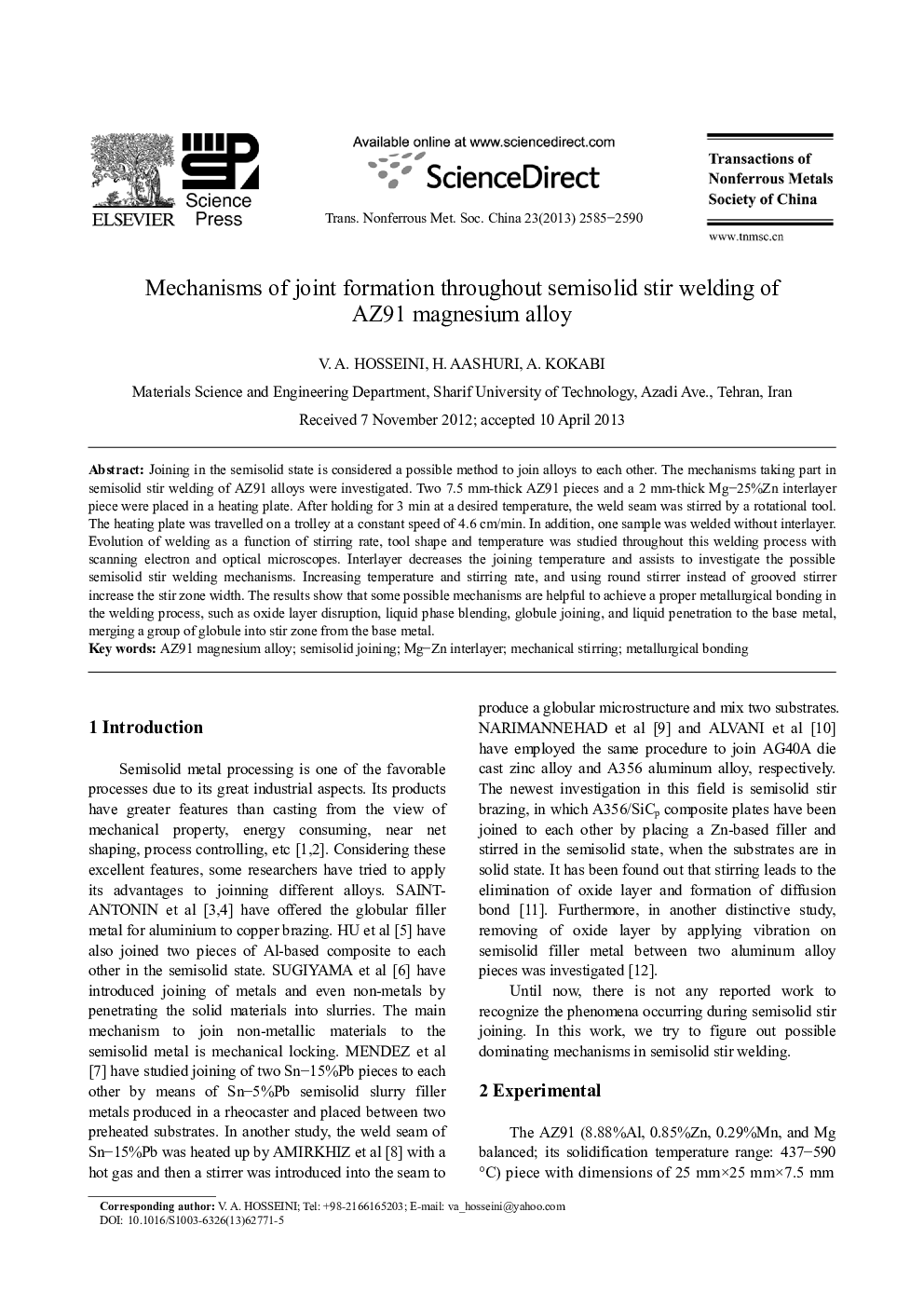| Article ID | Journal | Published Year | Pages | File Type |
|---|---|---|---|---|
| 1636343 | Transactions of Nonferrous Metals Society of China | 2013 | 6 Pages |
Abstract
Joining in the semisolid state is considered a possible method to join alloys to each other. The mechanisms taking part in semisolid stir welding of AZ91 alloys were investigated. Two 7.5 mm-thick AZ91 pieces and a 2 mm-thick Mg-25%Zn interlayer piece were placed in a heating plate. After holding for 3 min at a desired temperature, the weld seam was stirred by a rotational tool. The heating plate was travelled on a trolley at a constant speed of 4.6 cm/min. In addition, one sample was welded without interlayer. Evolution of welding as a function of stirring rate, tool shape and temperature was studied throughout this welding process with scanning electron and optical microscopes. Interlayer decreases the joining temperature and assists to investigate the possible semisolid stir welding mechanisms. Increasing temperature and stirring rate, and using round stirrer instead of grooved stirrer increase the stir zone width. The results show that some possible mechanisms are helpful to achieve a proper metallurgical bonding in the welding process, such as oxide layer disruption, liquid phase blending, globule joining, and liquid penetration to the base metal, merging a group of globule into stir zone from the base metal.
Related Topics
Physical Sciences and Engineering
Materials Science
Metals and Alloys
Authors
V.A. HOSSEINI, H. AASHURI, A. KOKABI,
